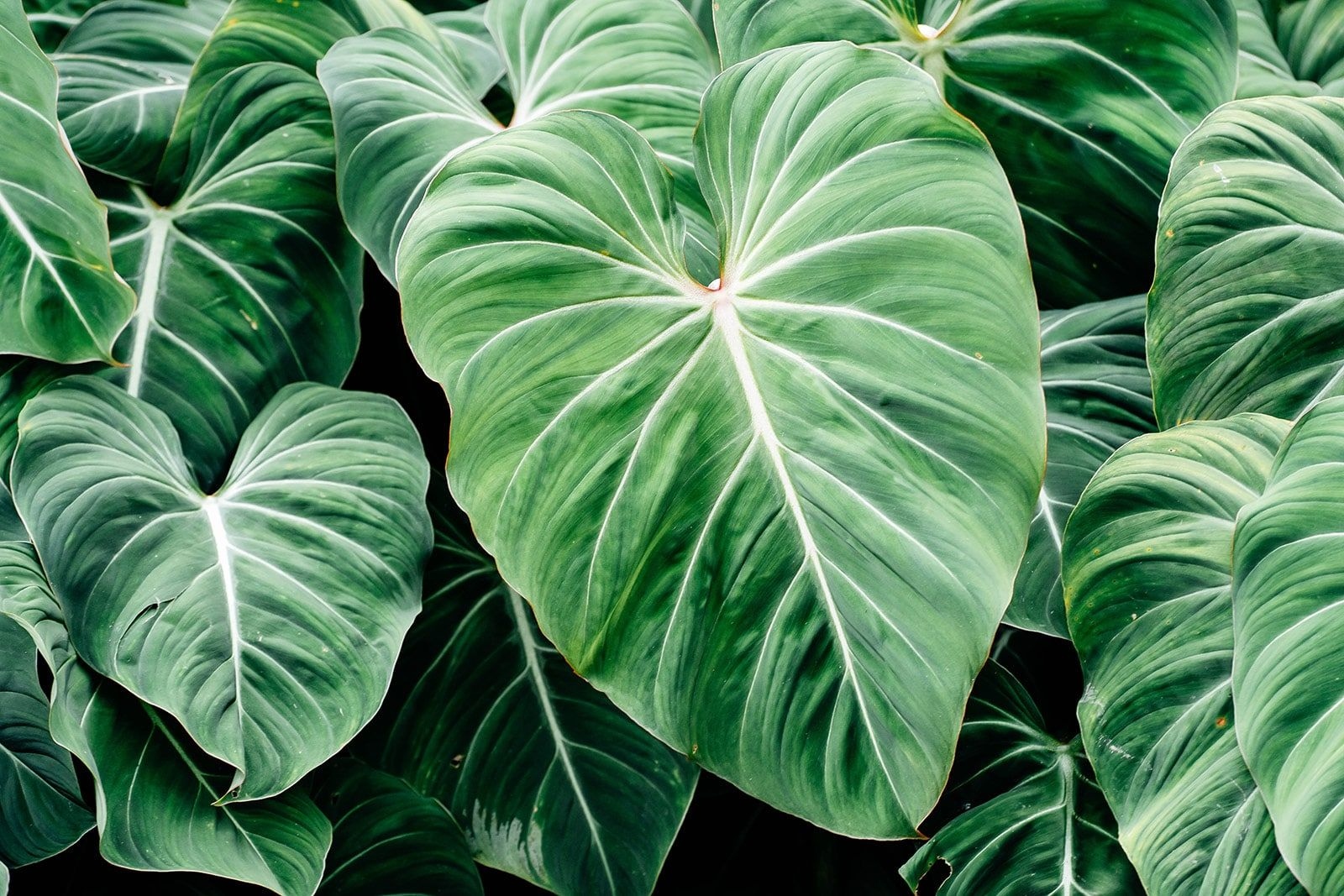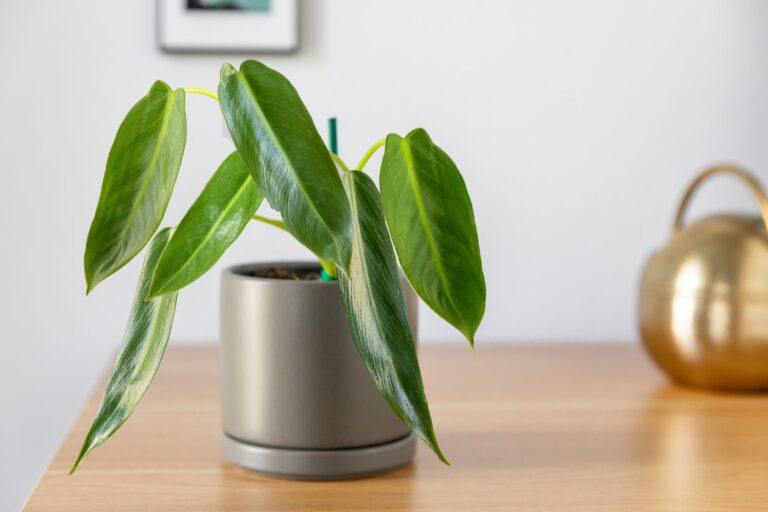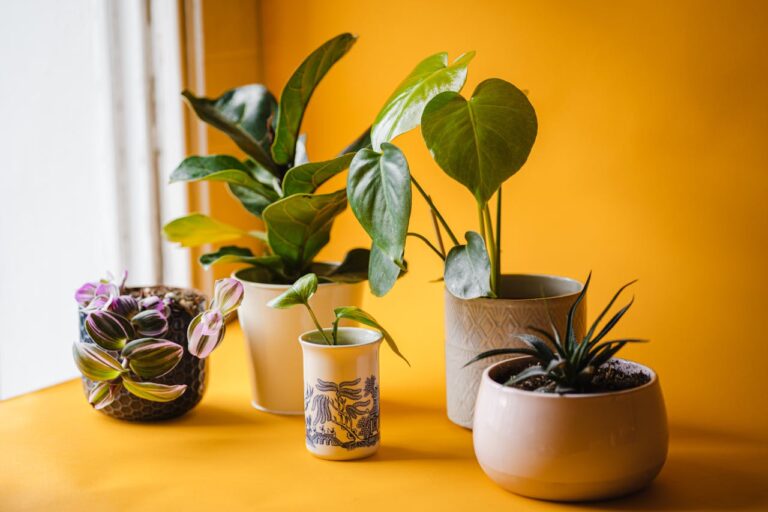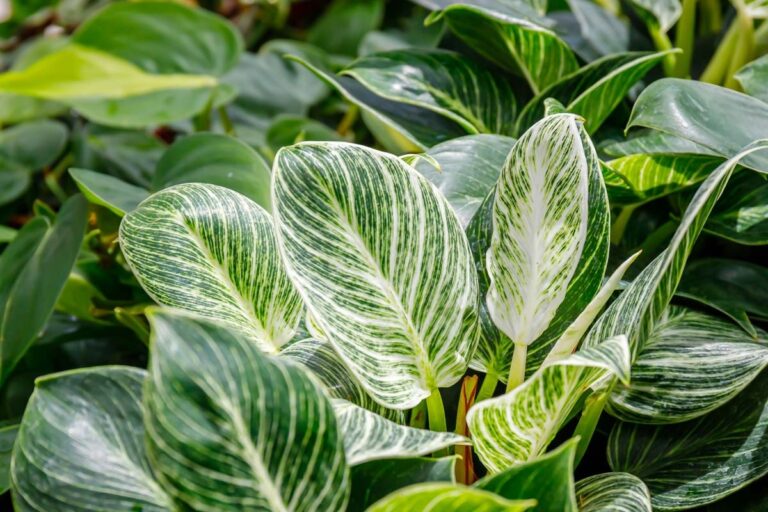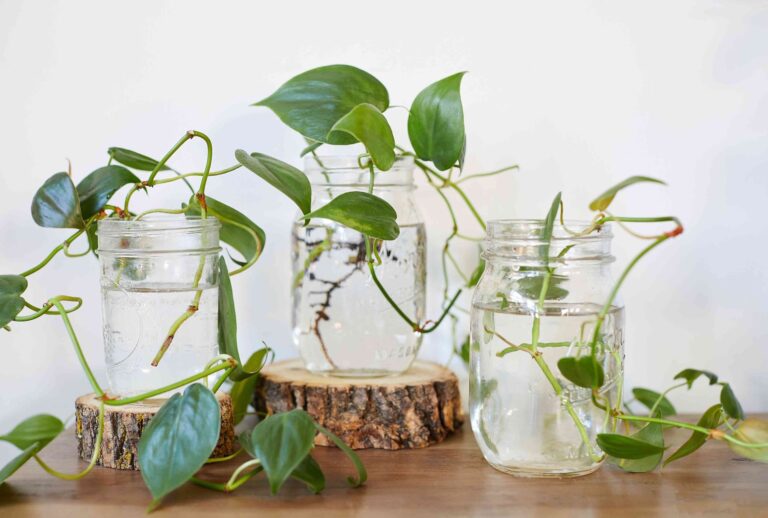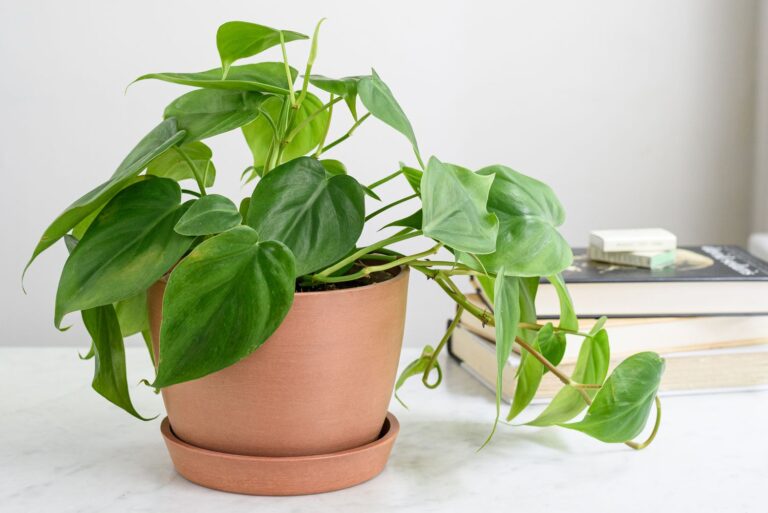Philodendron Gloriosum Crawler Care: Master Terrestrial Growth
Imagine if you walk into your house and your Philodendron Gloriosum, out there with its lovely 18-inch velvety leaves and striking white veining, has a rhizome on which to hang its arms, naturally crawling on the surface of the soil like a tropical forest floor. This isn’t fantastic — this is the reality facing growers who recognize the difference between crawling philodendrons and their climbing cousins. Most houseplant lovers will consider Gloriosum a type of philodendron, while this terrestrial crawler requires quite different methods of care.
The result? Not satisfied growers who are struggling with yellowing leaves in their plants, stunted growth and mysterious atrophy — all the while they follow the conventional aroid wisdom. The first step toward transformation is to adjust your care routine on pace with their natural creeping behavior, unlocking growth rates threefold faster in a year or less.
Understanding Terrestrial Crawling Growth: The Foundation of Success
Philodendron Gloriosum originally adapted as a ground-dweller that roams on Colombia’s moist rainforest floors, spreading horizontally through specialized rhizomes that have thick, underground stems, which trap nutrients and produce new areas for growth. This crawling approach can’t be compared to climbing philodendrons where they climb trees due to aerial roots that naturally arise.
The rhizome becomes plant’s lifeblood and grows horizontally along its axis just below or slightly above ground level. Every node of this rhizome can later emerge as new leaf-bearing stems, which is the basic structure of colony growth patterns for the species. Unlike climbing species which have to create long internodes to hold them up, Gloriosum grows small, with leaves sprouting close beside each other in its creeping stem.
This growth pattern explains why traditional vertical systems often fail in this regard; The plant doesn’t want height—it wants territory. Sufficient horizontal space is essential, for mature specimens, which need 24 inches or more space in the soil, to accommodate natural growth of rhizomes. Limiting horizontal growth results in stress responses such as smaller leaves, yellowing foliage, and cessation of growth in endurants.
The crawling mechanism also plays a role in root development. Roots spread wide, not deep, constituting shallow but extensive soil networks capable of pulling nutrients from rotting forest litter. This adjustment results in large pots that waste soil volume and shallow, wide containers that simulate the environment perfectly.
Maximizing Leaf Development: The Path to Spectacular Foliage
The desired 18″ size of leaf is reached by understanding three interconnected things including light intensity, humidity control, and rhizome growth. Hence, most growers underestimate the light needs since they only give indirect illumination (bright) without considering the light spectrum needed for maximum leaf expansion.
Above 70-85% bright indirect light, optimal leaf development is occurring with 1000-2000 foot-candles or ~10,000-20,000 lux. This intensity range replicates the dappled sunlight that filters through rainforest canopy branches. The reason many plants are stuck with 8-10 inch leaves (indoor locations only boast 300-500 foot-candles, not enough for spectacular growth) lies in us measuring light at a simple meter.
Optimal Light Placement Strategies
Southern exposure windows with sheer curtains always produce the largest leaves, especially when standing 2-3 feet from the glass. Eastern exposure is good with plants that are around windows and northern exposures are usually light unless they are complemented with grow lights. Western exposure must be closely monitored since afternoon warmth may press down the velvet leaf.
Leaf cell expansion depends significantly on morning sunlight exposure. The warm light of the morning, which flows down through a tunnel through the lens, is blue-soluble, so it makes photosynthetic factors that can form the body’s energy stores for lots of leaf growth occur. Rotating plants every week helps to maintain good light distribution so that lopsided growth does not occur – which weakens petioles that carry the light weight on heavy leaves.
Temperature Fluctuations for Enhanced Growth
Differences in temperature between day and night also affect leaf size. The 10–15°F gradations from daytime highs (75-80°F) to nighttime lows (60-65°F) replicate the patterns of natural rainforests and drive effective growth. This level of temperature oscillation is responsible for cellular growth in the while the plant is relaxed and will build up bigger, thicker leaves.
Humidity Optimization: Creating the Perfect Microclimate
Gloriosum is able to withstand normal household humidity, but the 60-80% humidity threshold ensures explosive growth and will keep you from facing the kind of challenges such as brown leaves and spider mites that many sufferers from the plant get used to. The goal is not only to achieve these figures; but to keep the humidity consistent without introducing conditions that make fungal disease possible.
Humidifier Selection and Placement
Humidifiers with commercial origins are the most useful and convenient – especially ultrasonic humidification that generates cool mist without heating the water. Attaching the humidifiers 3-4 feet from the plants provide adequate coverage but also prevent direct mist contact with velvet leaves. Working units are best when they are allowed to run continuously in the daytime as stomata are busy swapping gases.
Alternative Humidity Enhancement Methods
Pebble trays add extra humidity but must be carefully used to maximize efficiency. The water is to be kept at a level 1–2 inches below the base of the pot and do not allow capillary action and excess soil dampness. The addition of decorative stones or expanded clay pebbles increases the evaporation surface but restricts mosquito breeding.
When placed outdoors in groups of plants that favor humidity, they form microclimates that benefit each other by allowing collective movement of water through the ground. Locally, positioning an area of 3–5 plants within a 2-foot area enhances local humidity 10–15% above room level. That technique is especially effective when heating systems dry indoor air significantly in winter.
Consistency Over Maximum Levels
Stability of humidity beats maximum for success. It has a greater effect on the leaf tissue than consistent lower humidity. Maintaining 55% humidity on a continuous basis is much better than moving between 40% and 70% daily. Digital hygrometers are easily accessible, and inexpensive models offer enough accuracy for home cultivation.
Managing Temperature Sensitivity: Preventing Growth Slowdowns
Gloriosum is known to be very sensitive to temperature variations, with known thresholds from warm to cold defining plant growth success and decline. Knowing these limits can help prevent the strange yellowing and stunted growth that frustrate so many growers.
Critical Temperature Thresholds
This critical minimum temperature is 55°F (12.8°C) below which the damage starts. Unlike some tropical plants that simply stop growing, Gloriosum shows measurable tissue damage that manifests as translucent patches developing into brown, crispy areas. Repairing this damage takes months of ideal conditions, which is why prevention is critical.
Optimal rates of growth lie between 65-80°F (18-27°C) in the sunlight and can be acceptable up to 60°F on slightly cooler nights. Above 85°F, the velvet leaf surface is strained to the point where it grows thin and papery instead of having the typical plush surface. The heat stress is often accompanying a greater need for water which can create overwatering problems.
Avoiding Draft Damage
Cold drafts can be especially dangerous, even shorter exposures to temperatures of the 50-60°F range. Air conditioning vents, drafty windows and outside doors have microclimates that can hurt plants whereas thermometers set in room show average values. This prevents a gradual decline when plants are located away from these draft sources as their damages are not noticed before large scale loss.
Managing temperature is seasonal and needs to be planned out. Winter heating systems generate dry conditions that stress plants, summer cooling systems produce cold drafts. The good news is it is best not to have perfect, never-ending fluctuations that can lead to extreme fluctuations from season to season: you want consistent annual temperatures.
Rhizome Division Propagation: Expert Multiplication Techniques
As the former, the latter may have difficulty in propagating a single plant for life. Successful propagation separates expert growers and occasional growers: rhizome division provides the best way to grow new plants without losing the vigor of the parent plant’s growth. Correct timing of propagation and correct technique and good maintenance ensures that well over 90% of the chances of success will be gained.
Optimal Timing and Technique
The optimum propagation window also comes during periods during active growth, from spring through early summer when the plant can place new root systems more rapidly. Rhizomes should maintain two growths (nodes) and one healthy leaf to supply photosynthetic energy in establishment. Sections lacking leaves take longer to root and need greater care.
Division must be done with a clear focus on rhizome orientation. Not unlike stem cuttings, which root from cut ends, rhizome sections develop new growth from lateral buds along the stem line. Vertical cuts between nodes (rather than horizontal cuts along the rhizome) preserve these growth points, and speed up the establishment. Sharp pruning shears prevent tissues from crumbling under the force of fungal infection.
Rooting Medium Selection
Rooting medium is found to drastically influence success rates. Sphagnum moss gives an optimal ratio between moisture retention and aeration when wrung to damp instead of wet consistency. It needs replacing every 2-3 weeks to kill any bacteria that grow that can cause decay. Perlite propagation provides increased aeration with lower rates of moisture retention, but more frequent monitoring is necessary to avoid drying.
Post-Division Care Requirements
Following division management it does require precise environmental condition control. Separate divisions must have 70-80% humidity, with propagation chambers or clear plastic bags with vents. Temperature is steady — 70-75°F— with indirect light but no immediate sun. Roots build up during the 3-4 weeks period of establishment and new plants appear 2-3 weeks after roots form.
The fatal oversight common among growers is making the leap to the soil too soon. It takes considerable development of roots—min 2-3 inch roots on several nodes—in rhizome divisions prior to potting. Premature transplantation stresses the division enough that not only it can take months to grow properly, but it can also kill the division.
Pest Prevention and Management: Protecting Your Investment
Gloriosum possesses a velvet leaf style and a horizontal growth, both advantageous features which place it in a unique pest profile not typically seen anywhere else, and necessitate preventive management. Spider mites account for the top-level threat, which target the sensitive leaf tissue by tearing into its mucous membrane with their pointed mouthparts. Early identification and response is much more successful than managing confirmed infestations.
Spider Mite Prevention and Control
Spider mites thrive under the dry conditions that occur during winter heating. Such microscopic pests produce a fine webbing about leaf veins, causing damage by cutting its surface which is seen when tiny silver or bronze spots appear. Left unchecked, populations explode at an alarming rate, covering whole leaves in detailed webbing and causing premature yellowing and shedding of leaves.
Mite reproduction is inhibited by high humidity levels above 50%, which is preventive. Routine inspection with a magnifying glass can find the early infestations before anything is visible as damage. Once in a while, checking the undersides of leaves weekly alerts the grower to problems where treatment will help with their root cause or to avoid unnecessary treatment.
Secondary Pest Threats
The mealybug represents a secondary form of threat, especially those affecting new growth, such as where leaves come out of the rhizome. These cottony pests cluster in protected areas near the plant’s stems, eating plant juices and excreting honeydew, attracting ants and stoking sooty mold growth. They have a waxy coat that protects them from numerous treatments, mandating repeated treatments for control.
Integrated Pest Management Approach
Integrated pest management is a multi-pronged approach to sustainable pest management. Beneficial predators like ladybugs and predatory mites provide biological, rather than chemical, control. The repeated applications of neem oil every 7-10 days can disrupt pest reproduction cycles and are safe to perform routinely. Insecticidal soaps need direct contact with pests but knock down visible infestations instantly.
The velvet leaf surface needs special attention in treatment. Heavy sprays can tear down the fragile trichomes that produce the look. If we use fine mist or wipe with gentle cloths we will prevent any lesions on the surfaces of the leaf but help apply treatment very effectively.
Troubleshooting Common Crawler Care Mistakes
Even seasoned cultivators face difficulties when handling Gloriosum’s specificity. By understanding the root cause of most basic problems before they affect plants so rapidly they can be diagnosed and corrected right away.
Small Leaf Growth Solutions
Inadequate care frequently causes small leaf growth that is often due to rhizome constriction. As this creeping stem enters the tip of the container, plant growth slows down as they feel their limited space. Repots into large containers — at least 18 inches in mature sample sets off a period of increased growth and bigger leaf production right away. It can take weeks for a lot of space to respond.
Yellowing Leaves During Active Growth
Yellowing leaves during active development, as is usually the case, represents overwatering rather than a lack of nutrients. Because of the rhizome’s own storage ability, plants can survive brief dry periods better than saturated conditions, so they can endure longer time-lines, rather than longer periods in a dry world. The top third of the soil should be left dry before watering to prevent root rot, without losing moisture to allow it to form and grow properly, as well as the top third of the soil to dry before watering.
Brown Leaf Edges and Tips
Brown leaves on these leaf edges even with good humidity indicates a buildup of minerals from fertilizer salts or hard water. Flushing soil monthly with distilled water eliminates buildup salts that burn delicate leaf margins. Switching to filtered water reduces the damage to fluoride and chlorine that can appear in tip browning with passage of time.
Sudden Leaf Decline
Sudden decline in leaves as temperatures change means cold damage, not cultural problems. Short-term exposure to temperature of fewer than 55 degrees Fahrenheit will induce leaf abscission protective to leaves. Stable temperatures together with protection against drafts will prevent this reaction, while damaged plants will generally recover with good care.
Unresponsive Growth Patterns
Unresponsive growth often causes under-lightened plants. Although plants are able to survive in lower light, they demand significant lighting to develop robustly. Raising light to 1000+ foot-candles or adding grow lights sparks new growth over a period of 4-6 weeks.
Professional Growth Maximization Methods
The optimum application of the genetic material can achieve so-called “gloriosaceae” which can produce “gloriosum with little but light” or “green” roots that grow from the genetic material is not enough to achieve its desired end. The above advanced procedures can speed up growth and leaf size enormously if applied properly.
Strategic Fertilization Timing
Timely fertilization improves the natural cycles of growth. Applying quarter strength liquid fertilizer (10-10-10 NPK) every 2 weeks during growth allows high availability of nutrients without salt buildup. If you skip fertilizing during the winter recuperation, it will stop the formation of nutrients to damage the roots.
Root-Zone Temperature Control
Control of root-zone temperatures improves nutrient availability. Keeping soil temperatures within 70-75°F with seedling heat mats (in the cooler months) quickens the metabolic process. This approach is especially beneficial for plants located in basement growing fields, or during the winter when room temperature decreases.
Carbon Dioxide Supplementation
There is growth acceleration with carbon dioxide supplementation for hardcore growers. Increasing the ambient levels of the CO2 from 1000-1200 ppm in the day-time has been associated with growth speeds in the range of 20–30 % in combination with optimal light and temperature. Base stage fermentation or commercial CO2 bags to fill in for small growing spaces.
Airflow Optimization
When it comes to optimizing the arrangement of airflow, stationary conditions will be avoided and drafts are not destructive. Low-speed oscillating fans produce air flow soft enough to encourage petioles along with big leaves while preventing pests. Set up fans that block direct air path on plants, avoiding desiccation stress.
Growth Hormone Applications
Growths through application of growth hormone may stimulate the development of rhizomes and branching. Products based on cytokinin as soil drenches promote lateral bud development, making the plants more dense with multiple growth points. This method is especially useful when propagating material or renewing mature samples.
Key Sources:
Philodendron Gloriosum Care: Essential Tips for Lush, Crawling Growth | Plant House & Garden
How to Grow and Care for Philodendron Gloriosum | The Spruce
The Simple Guide to Philodendron Gloriosum Care | Rooted Hues
Philodendron Gloriosum Care Guide: Light, Soil & Tips for Big Leaves | Plant Circle
The Complete Philodendron gloriosum Plant Care Guide | Garden Betty
Philodendron Gloriosum Propagation In Water | Teak And Terracotta
Philodendron gloriosum (Glorious Philodendron) | Gardenia
How To Care For Philodendron gloriosum | Ohio Tropics
Evolution of Philodendron (Araceae) species in Neotropical biomes | PMC

